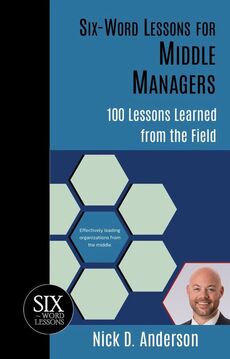 Leadership is a crucial aspect of any organization's success. Managers are integral to achieving the company's goals, and their leadership style significantly influences team performance. Here we examine how the golden rule, which states that you should treat others as you would have them treat you, may be applied to management and how it can lead to better leadership outcomes. This principle has been around for millennia and has applications beyond human relationships. When applied to leadership, the golden rule is a guiding concept for managers to lead their teams effectively. You Should Treat Others Like You Want to be Treated Managers should treat their team members respectfully while in a leadership setting. They may establish a productive and encouraging work atmosphere that inspires and encourages their team by demonstrating empathy and understanding. By treating others as they would like to be treated, managers demonstrate to their team what behavior is acceptable and expected, setting an excellent example for the rest of the team to follow. When managers consistently treat their team members with respect and fairness, they increase trust within the team, leading to improved collaboration and communication. Do Not Ask Your Team to do Anything You Would Not do Yourself One of the most notable advantages of using the golden rule in leadership is that it stops managers from asking their teams to perform things they are not comfortable doing; this leadership style fosters a sense of justice and equality. Managers who lead by example exhibit their dedication to the team's success and build a healthy work environment. Maintain the Same Level of Expectations and Accountability for Yourself The golden rule expects managers to have the same expectation and accountability as the rest of their team. Managers must be willing to accept responsibility for their actions and be accountable for the repercussions of their decisions. The Advantages of Adopting the Golden Rule in Management As a manager, following the golden rule will win your team's respect and establish a positive and harmonious work atmosphere. It will show a culture of trust, honesty, and open communication, leading to increased team morale, work satisfaction, and productivity. This approach encourages your team to reciprocate the conduct, which leads to fewer disagreements and more significant team connections. So, it's not just about being a decent person but also about fostering an excellent work atmosphere that benefits everyone in the long term. The golden rule is a classic notion that has shown to be an exceptional management technique. Middle managers may establish a good and supportive work atmosphere that encourages and inspires their team by adhering to this rule. By setting a high bar for their team and holding themselves accountable, managers may build a culture of responsibility and accountability inside the entity. Thus, the golden rule has proven to be a powerhouse tool to lead teams with finesse and achieve goals like a pro.  Nick Anderson has been a student of leadership for 30 years beginning the day he received a novel “Leadership Award” from his U-12 soccer coach. During his 25-year career in banking Anderson led teams through mergers, acquisitions, bank failure, recessions and rapid growth while successfully managing the throes and pitfalls of being a middle manager. As a community volunteer Anderson led nonprofit organizations through periods of significant change as a board member, treasurer, vice president and board chair. Learn more at Chosen-Leader.com.
0 Comments
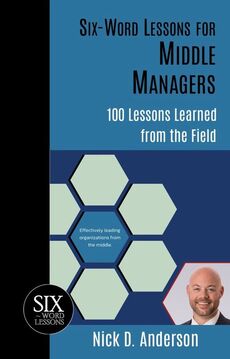 Written communication is one of the most essential forms. Effective writing involves careful choice of words and results in greater clarity than verbal instruction. Written communication is necessary for managers when reinforcing their message across the team. Why are Meeting and Agreement Recaps Important? Meeting and agreement recaps are a powerful way to establish credibility and keep teams accountable for project deliverables. When done correctly, this simple strategy will reinforce communication, eliminate misunderstandings or confusion, and increase the likelihood of achieving desirable results. If you are conducting a project meeting, there is a reasonable probability that some decisions are made during that time, including assigning certain duties to different team members. Getting these decisions in writing and sending a copy of those agreements to everyone in attendance helps achieve the following: Ensures accountability and ensures that progress is not lost During a business meeting, someone may volunteer to do something they may forget later. The same is true for decisions: when things are being decided, they can easily be forgotten since this may have just been one of many meetings—documenting these decisions or actions in writing as a permanent means of communication, makes useful where record maintenance is required. (Ever hear of "meeting minutes"?) Moreover, a written record eliminates uncertainty on who is responsible for what and how the project should advance. Most importantly, it allows both the project team and manager to easily keep track of progress relative to goals and know who is responsible for each contribution. Offers alignment and Transparency By writing out the final decisions and forwarding them to the relevant parties, you can ensure that everyone (even the absentees) has visibility into the action items, next steps, and important decisions. Meeting recaps also give team members a clear direction on where the project is headed and how to move forward with it. This comes in handy when a stakeholder or team member does something that doesn't align with the agreements. You can easily discuss the decision by reviewing the written recap. Encourages employee engagement and gives due credit Revisiting the written recap can help managers see which team members achieved what they had initially promised. The results can then be compared, and credit can be given where due. This helps increase motivation and employee engagement, thereby increasing productivity. Eliminates Confusion Recapping meetings and agreements helps create a forum where anyone can raise questions or concerns about the decisions. This helps clear any confusion on the spot and prevents future problems from materializing. How to Create an Effective Agreement Recap? Take notes of expectations you and your team members have from the project and list them in a precise bullet-pointed manner. Email these pointers to the relevant member(s), and highlight the deadline (if you have any). Send a reminder periodically so they can stay on top of their duties. Summing Up It is more than helpful to back up verbal agreements during meetings with written agreements... doing this may just be one of the simplest and most effective actions a manager can take.  Nick Anderson has been a student of leadership for 30 years beginning the day he received a novel “Leadership Award” from his U-12 soccer coach. During his 25-year career in banking Anderson led teams through mergers, acquisitions, bank failure, recessions and rapid growth while successfully managing the throes and pitfalls of being a middle manager. As a community volunteer Anderson led nonprofit organizations through periods of significant change as a board member, treasurer, vice president and board chair. Learn more at Chosen-Leader.com. 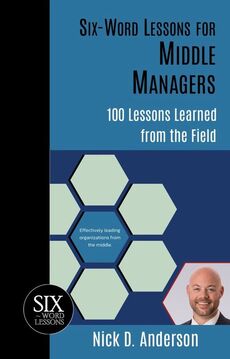 As a leader, you have to make many difficult decisions for your organization and take responsibility for the results. Choice refers to the deliberate act of doing or thinking one thing above another. The leader's choices and decisions carry the additional burden of impacting employees’ careers in the long run, in addition to their own. One decision might hinder or promote career development. Morals and standards play a significant role in our judgments and choices. While the past cannot be changed, we can learn from our mistakes. Take advantage of the present as a gift, and every choice you have ever made will form the basis of your future. Avoid regrets by making the correct decisions today. You have the freedom to do or be anything you wish. How A Manager’s Choice Can Change the Destiny of Employees The decisions you make for your workforce impact myriad outcomes. The law of cause and effect governs what happens after we make a decision and while many see the first-order effects, many often fail to observe the second and third-order effects of a decision. A bad decision always has an unfavorable outcome, somewhere down the line. We must be willing to make hard decisions if we want to enjoy the best possible results of our endeavors. Once we take ownership of how we use our freedom of choice, we can change whatever behaviors or mindsets are required to cultivate our own leadership and drive. How Does Making Good Choices Help Managers? People are constantly making decisions; some are simple and easy to make. However, as a manager, it is simple to feel uncertain and cautious while making big decisions. Learning techniques for making wise choices in challenging or pressured situations is crucial. Indecision alone may negatively affect how you feel. Even if you cannot predict how something will turn out before you decide, find solace in the truth that you have made the most informed decision available at the time - and you can always choose another, better way should one be revealed. Ways to Make Good Choices as a Manager
Summing Up
 Nick Anderson has been a student of leadership for 30 years beginning the day he received a novel “Leadership Award” from his U-12 soccer coach. During his 25-year career in banking Anderson led teams through mergers, acquisitions, bank failure, recessions and rapid growth while successfully managing the throes and pitfalls of being a middle manager. As a community volunteer Anderson led nonprofit organizations through periods of significant change as a board member, treasurer, vice president and board chair. Learn more at Chosen-Leader.com.  Whether its adopting AI or shoring up environment, sustainability, and governance (ESG) practices, Jim DuBois sees an opportunity to look at changes not as chores or responsibilities, but as real value propositions for enterprise organizations. Read more at InformationWeek.com. See Jim's book on Amazon.
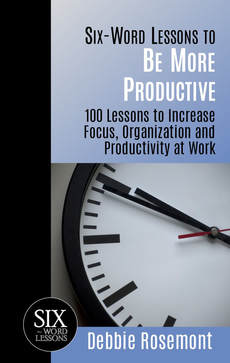 Where are you working? Are you back to doing most of your work from your office, or still primarily working from home? Maybe a hybrid of the two, or maybe even from a neutral location? There are many different work scenarios we’re seeing with our clients these days. Some had plans to return to an office that are now delayed, so they continue to work exclusively from home. Others are returning to an office part time. Some have returned to an office full time. Still others are working from home effectively and have no plans to return to an in-person office. Work from anywhere and be productive! Wherever you are working, you want to be productive. You want to work smarter, not harder and not just spin your wheels. You want to get results and work in an effective and efficient way. By working effectively and efficiently, you’ll have more time for what you value most. We want that for you, too! That’s why we’ve created a guide to help you work productively from anywhere. When the pandemic was in it’s early days in the first quarter of 2020 and most people shifted to working from home full time (many while also having spouses, partners and children working or learning from home as well), we produced a Rock Your Work from Home guide to help. Working and living all under one roof presented some unique challenges, especially for those who were not accustomed to doing so. A year and a half later, and we’ve updated this guide to help you work from wherever you are, productively. There are some consistent strategies you can apply no matter where you are working to be able to focus on your priorities and get important things done. This guide can either validate that what you are doing is working or provide new strategies to boost your productivity. Get our free “Rock Your Work From Anywhere” guide Our free “Rock Your Work From Anywhere” guide contains practical tips and strategies to help you carve out your dedicated “anywhere” workspace, put processes into place, implement productive habits, and more! Read it, try out the ideas that feel best for you or modify as you see fit, and please let us know about your results! We’re cheering you along and are here to be a resource to you, your company or others you may know. Schedule your Discovery Call to learn more about how to have more time for what matters, no matter where you are working.  Debbie Rosemont is a Certified Professional Organizer, Productivity Consultant and Trainer and Owner of Simply Placed. Simply Placed teaches organized systems and productive habits that allow busy professionals to maximize their time, focus on their priorities, reduce stress, improve their customer service and increase their bottom line. She is the author of Six-Word Lessons to Be More Productive.  In business and life there are force multipliers—things that, when put in place or adopted, make other things easier. Force multipliers are small changes you can integrate into your daily routines. They may not seem like much, or take much effort in and of themselves, but they will ultimately save you time, stress, and make a positive impact in other areas of your job or life. Do you ever feel overwhelmed by responsibilities and wish things could be easier on a day-to-day basis? Do you wish you had more time in your day for your priorities? Try using force multipliers! Examples of force multipliers You can apply force multipliers in your life in a number of ways. A basic example is parking farther away in a parking lot or taking stairs instead of the elevator. These small changes get you where you need to be, integrate exercise into your day and help you achieve fitness goals. Other force multipliers that can advance your personal productivity include taking adequate mental and physical breaks throughout the day. When you give yourself time to recharge your brain and body, you can be more productive. Drinking plenty of water, eating smart, getting enough sleep and partaking in regular exercise keeps your body and mind fueled for performance. By taking time in your day to do these things, you’ll see results such as as heightened energy, focus, and creativity. Ultimately, you’ll gain more time and energy for things that matter most. Using force multipliers to improve productivity Automation of simple tasks can also be a powerful force multiplier. Automating small things, like sorting emails from certain senders into specific inbox folders, can have a huge impact resulting in more time. Automatic bill pay can alleviate stress from your monthly routines and ensure nothing important is missed. When automation isn’t feasible, delegation is also a great force multiplier to put to use. Delegating tasks to others to take things off your plate on a daily or weekly basis can save you time and stress. It gives you back time to focus on the things that only you can do or that are important to you like quality time with those you care about, to engage in hobbies or practice self-care. Another impactful force multiplier is the implementation of structure and systems in your routines and at work. Having reliable, repeatable, documented systems in place can help you in more ways than one. Knowing what steps to follow in order to get consistent results can greatly reduce stress and save time. Systems you can rely on also reduce complications when unexpected things do pop up. You’ll have clear directions for when and how to complete a routine task. You can share those with others if you opt for delegation. What systems could you take a little time to create once so that you consistently get results with less effort? If you want to make things easier in your life or work, implementing force multipliers could be your answer! Schedule your free, no-risk Discovery Call to learn how we can help bring structure and systems into your daily life.  Debbie Rosemont is a Certified Professional Organizer, Productivity Consultant and Trainer and Owner of Simply Placed. Simply Placed teaches organized systems and productive habits that allow busy professionals to maximize their time, focus on their priorities, reduce stress, improve their customer service and increase their bottom line. She is the author of Six-Word Lessons to Be More Productive.  Do you struggle with saying “no”? Do you take on too much, or allow others to take your time? When that happens, it is easy for your plate to become overloaded. With just 24 hours in a day, sometimes that is not enough for what everyone asks of you and for what you need. Learning how to respectfully say “no” is one of the most powerful time management strategies you can use. Saying “no” protects your time to stay on task and keep up with the priorities you’ve set. Saying “yes” to something means saying “no” to something elseWhen you say “yes” to one more work project, that may mean saying “no” to dinner on time with your family. “Yes” to a new “drop everything and focus on this” request from the boss may mean “no” to meeting an existing deadline. Learning how to say a respectful “no” is a skill everyone should learn. Some of us are just “yes” people out of habit, sense of obligation or eagerness to please. But over-scheduling or over-committing doesn’t do anyone any good. Our eagerness to say “yes” comes from a good place, but in the end, it can leave you feeling exhausted, stressed and burdened by your schedule. Saying no is a good skill to develop so you can stay healthy, avoid burnout, focus on your priorities and perform at your best. How do you say a respectful “no”? Everyone’s favorite manners writer, Anna Post (greatgrand-daughter of Emily Post) has some tips for perfecting this important skill:
When you are faced with the decision of saying “no” to something at work, this blog post details six tips you can try. Or, try the “yes, and…” technique. We like to share the “yes, and …” technique as an alternative to saying “no”. If you are a people pleaser, it is easier and more fun to say “yes” than no. “Yes, and …” is a conditional “yes”. For example: “yes, I can drop everything and do that for you now, and it means that this other project you had asked me to finish today will need to wait until next week. Do you agree that this is what you’d like me to do?” or “Yes, I can help you with that, AND, I’d be able to get it started next week; does that work for you?” “It’s About Time” to honor your boundaries of time management. Can we help you learn to respectfully honor your boundaries for better time management? Reach out today to schedule your free, no-risk Discovery Call! We can share tips and strategies that will help you maximize the time you have each day!  Debbie Rosemont is a Certified Professional Organizer, Productivity Consultant and Trainer and Owner of Simply Placed. Simply Placed teaches organized systems and productive habits that allow busy professionals to maximize their time, focus on their priorities, reduce stress, improve their customer service and increase their bottom line. She is the author of Six-Word Lessons to Be More Productive. 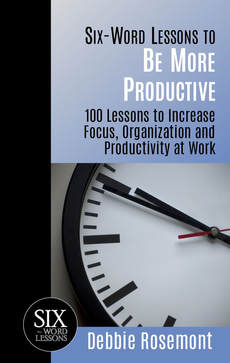 What is a productivity transformation? Do you struggle with productivity and feel like you could make better use of your time each day? Are there priorities in your life or work that keep getting pushed down on your list? Do you wish there was an easy way to get on track and accomplish the things you need and want to? When you feel like you have too much on your plate, finding a path to productivity can be overwhelming. Is perfectionism getting in your way? Are you struggling with making decisions or find yourself procrastinating and putting things off? Perhaps you’re in a season of change or transition. You need clarity and a plan to identify and eliminate barriers and time wasters. Are there things that are keeping you from having time for what you want? You need a productivity transformation! To transform your productivity, take the following action steps:
Do I need a productivity transformation? If you are feeling tired, frustrated or like you’re spinning your wheels, it’s time for a productivity transformation. Can’t stand where you are any longer and want help with this process? Our Six-Month Productivity Transformation is the answer! The “It’s About Time Six-Month Productivity Transformation Package” is for overwhelmed, busy professionals. We’ll provide support, coaching and consulting that will allow you to learn and implement new strategies. You’ll establish and build on productive habits, and be held accountable for sustainable results! Put yourself first and reach your goals! Are you struggling with setting the priorities in your day, either at work or at home? If you’re putting everyone and everything else first, this is your time, and you are worth it! By prioritizing you, you positively impact others and impact your own productivity. Imagine what your return on investment will be when you reach your goal. You’ve eliminated your time wasters. You’re feeling very on top of things! You’re organized and productive! You have systems and support to sustain growth, work-life harmony and the results that you want – all with less stress! The next six months will pass no matter what. Decide to make time for what matters to you and get the results you’re after. Schedule a no-risk, no-cost Discovery Call. Let’s explore how we might work together and how you can start your transformation today!  Debbie Rosemont is a Certified Professional Organizer, Productivity Consultant and Trainer and Owner of Simply Placed. Simply Placed teaches organized systems and productive habits that allow busy professionals to maximize their time, focus on their priorities, reduce stress, improve their customer service and increase their bottom line. She is the author of Six-Word Lessons to Be More Productive. |
See the Authors!
All
|


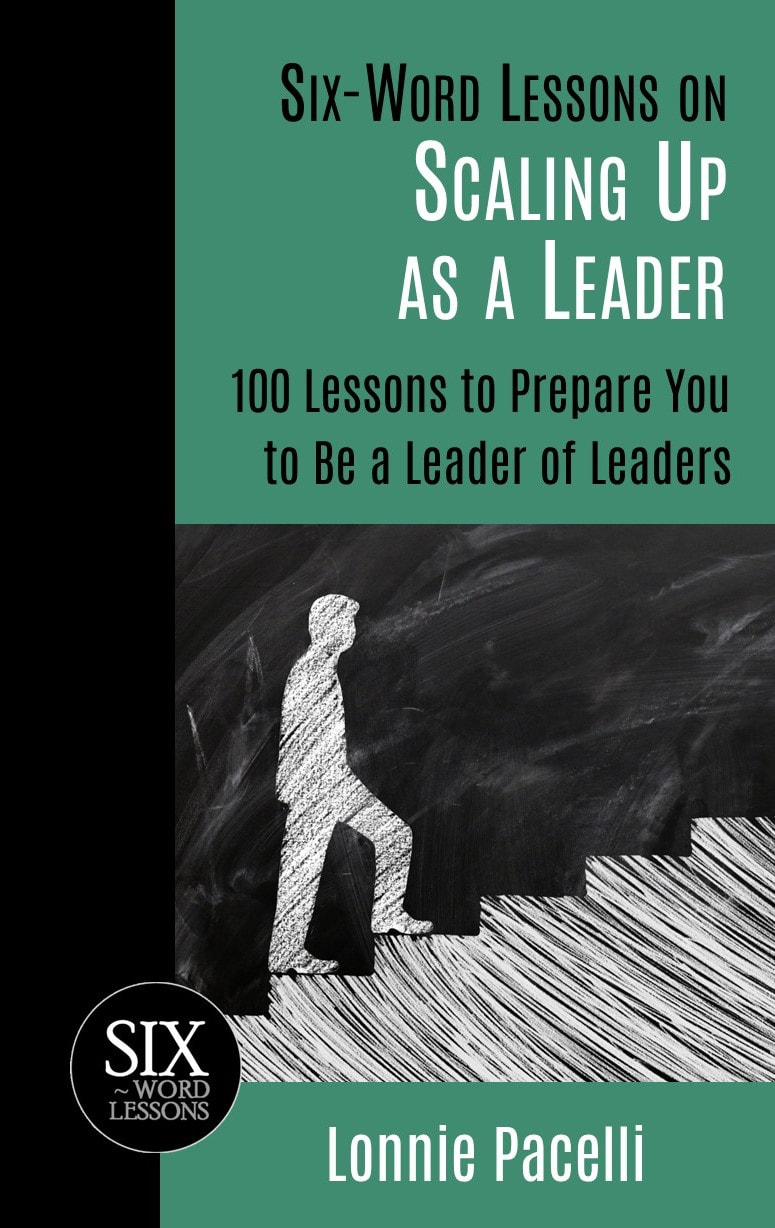
 RSS Feed
RSS Feed